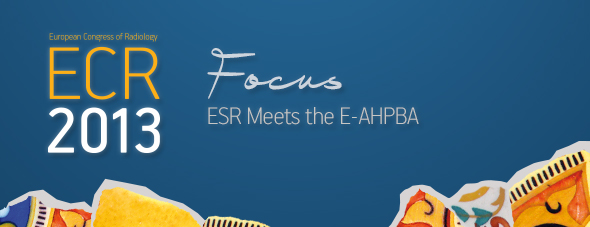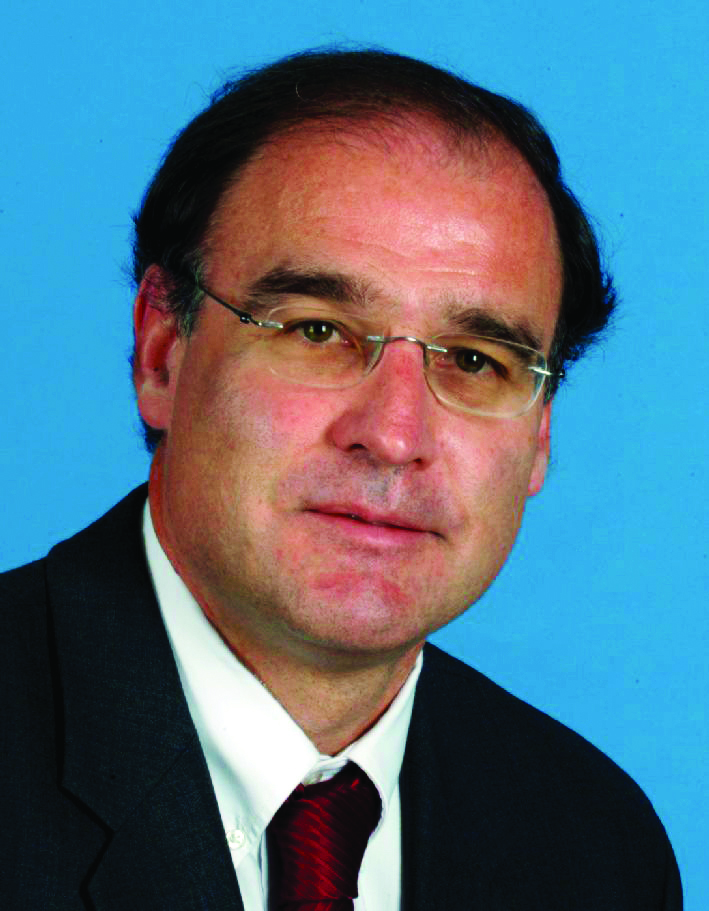ECR 2013 Focus: ESR Meets the E-AHPBA
The ‘ESR Meets’ programme, as well as being an extremely popular part of every ECR, serves a very valuable purpose. The sessions have not only reinforced relationships with numerous European national societies since the programme’s introduction in 2003, but they have also represented the ESR’s first official connections with several societies, sometimes from other continents and, more recently, from other disciplines. This year’s partner society, the European-African Hepato-Pancreato-Biliary Association (E-AHPBA) takes the ‘ESR Meets’ programme one step further …
Recent years have seen the first South American country take part in ‘ESR Meets’ (Argentina in 2010), as well as the first African country (Egypt in 2012), and the inclusion of a partner discipline in each programme since 2008 has led to collaborations with gastroenterology, radiation oncology, and emergency medicine, among others. At ECR 2013, however, the programme will see a first of a different kind, as the congress welcomes a society that not only covers more than one continent, but also encompasses more than one discipline: the E-AHPBA, which will be the first multidisciplinary ‘system-oriented’ society to be invited to take part in ‘ESR Meets’.
Although the E-AHPBA was originally founded by surgeons, and the majority of its members have surgical backgrounds, there has never been any reference to surgery in its name, and the society is open to all professionals who are interested in the liver, pancreas and bile ducts, regardless of their medical discipline. As the ECR programme planning committees always seek to increase multidisciplinary cooperation, and radiology as a discipline is beginning to turn towards disease and system-oriented organisations (of which the foundation of the European Society for Oncologic Imaging last year is the clearest example yet) it seems especially appropriate to get to know a society like the E-AHPBA, whose main mission is to be the prime interdisciplinary organisation for HPB-surgical science and scholarship in Europe and Africa.
“The E-AHPBA was formerly an association of surgeons, but is also now an interdisciplinary group; we have oncologists, pathologists, gastroenterologists, and also radiologists,” said E-AHPBA President, Prof. Pierre-Alain Clavien, from Zurich, Switzerland, who will co-chair the session with ECR 2013 Congress President, Prof. Jose Ignacio Bilbao.
“We address complex diseases of the hepatobiliary system and clearly many of those are dealt with in collaboration with radiologists, because we need images, we need interventional techniques, and in many cases patients can only be treated by a radiologist, so interaction with the ESR is very valuable. It’s not so easy to get whole societies to collaborate like this, so I think this will be a superb opportunity for both societies and a great meeting,” said Clavien.
The subject of the ESR meets E-AHPBA session is pancreatic cystic neoplasms (PCN), something which is encountered very frequently by radiologists and surgeons alike, but which also gives rise to some controversy in terms of diagnosis and treatment. Diagnosis may involve radiologists or surgeons to differing degrees, so it is important for specialists on both sides to understand what the other can offer. According to Bilbao, who is an interventional radiologist with a special interest in HPB, it is the simple question of what to do when you are presented with PCN as an imaging finding that is of particular relevance to general radiologists.
“Pancreatic cystic neoplasms might seem quite unusual, but they are much more common than you might think, and it is not easy for general practitioners and general radiologists to know what to do when this finding – which can also be an accidental finding – presents itself,” said Bilbao. “It is very useful to have some knowledge of the surgical criteria, to have an idea of which cases may require surgery and how that surgery may be performed. In some cases, interventional radiology may play a role, so it is important that all the disciplines involved in a case are aware of the various options. It is something where the multidisciplinary approach is very important and it’s something that should be of interest to all kinds of radiologists.”
Although the session focuses on a specific condition, Prof. Clavien is certain that it will highlight some good general examples of the ways radiologists and surgeons can work together effectively and learn from each other.
“I think it will give radiologists an excellent insight into what can be achieved by HPB surgeons. They may already be aware of some of the possibilities from contact with surgeons at their own institutions, but this is a meeting where they will hear from other centres, and they might be surprised by other surgical techniques that get very good results with few complications. On the other hand, of course the HPB people will learn more about the possible interventional options, and how they can rescue certain situations. Since we very frequently treat the same diseases with different treatments this is of obvious interest to both groups,” said Clavien.
“With this session we are putting people together and encouraging communication, which can only be a good thing. There are many conditions in the hepatobiliary system and pancreas where the surgeon would rather do one thing and the radiologist would rather do another. We don’t have too many studies or trials to definitively say who is right, so the best way to work that out is to talk, to exchange ideas, and maybe at the end of the day also to study together.”
“I think this cooperation will work extremely well due to the multidisciplinary understanding that both groups have,” concurred Bilbao. “As radiologists, we have diagnosis and intervention, as well as molecular and functional imaging, and we are very close to surgery. The complexity of HPB surgery is increasing, with hepatectomies, transplants, laparoscopy and so on, and our general understanding is good, but it still needs to increase. The E-AHPBA are very clear about their multidisciplinary approach and that is why we chose to invite them to ECR 2013. They are very open-minded and I think they want to include more and more people in their group for the benefit of patients with HPB diseases. This is where our interests very clearly coincide and I believe the session will reflect that,” he added.
Friday, March 8, 16:00–17:30
ESR meets E-AHPBA
EM 2: Pancreatic cystic neoplasms 2013
This article previously appeared in the ECR 2013 Preliminary Programme



